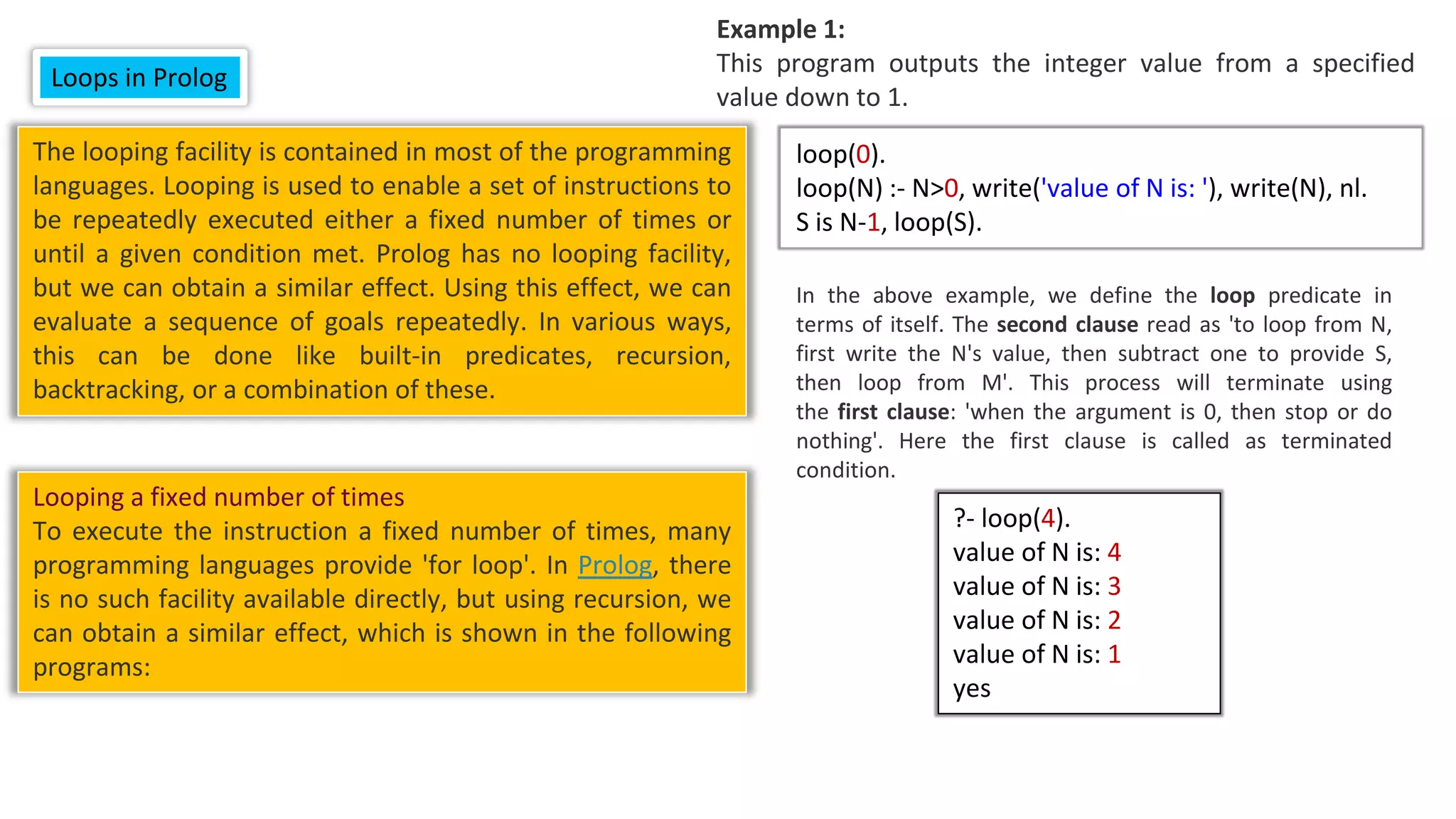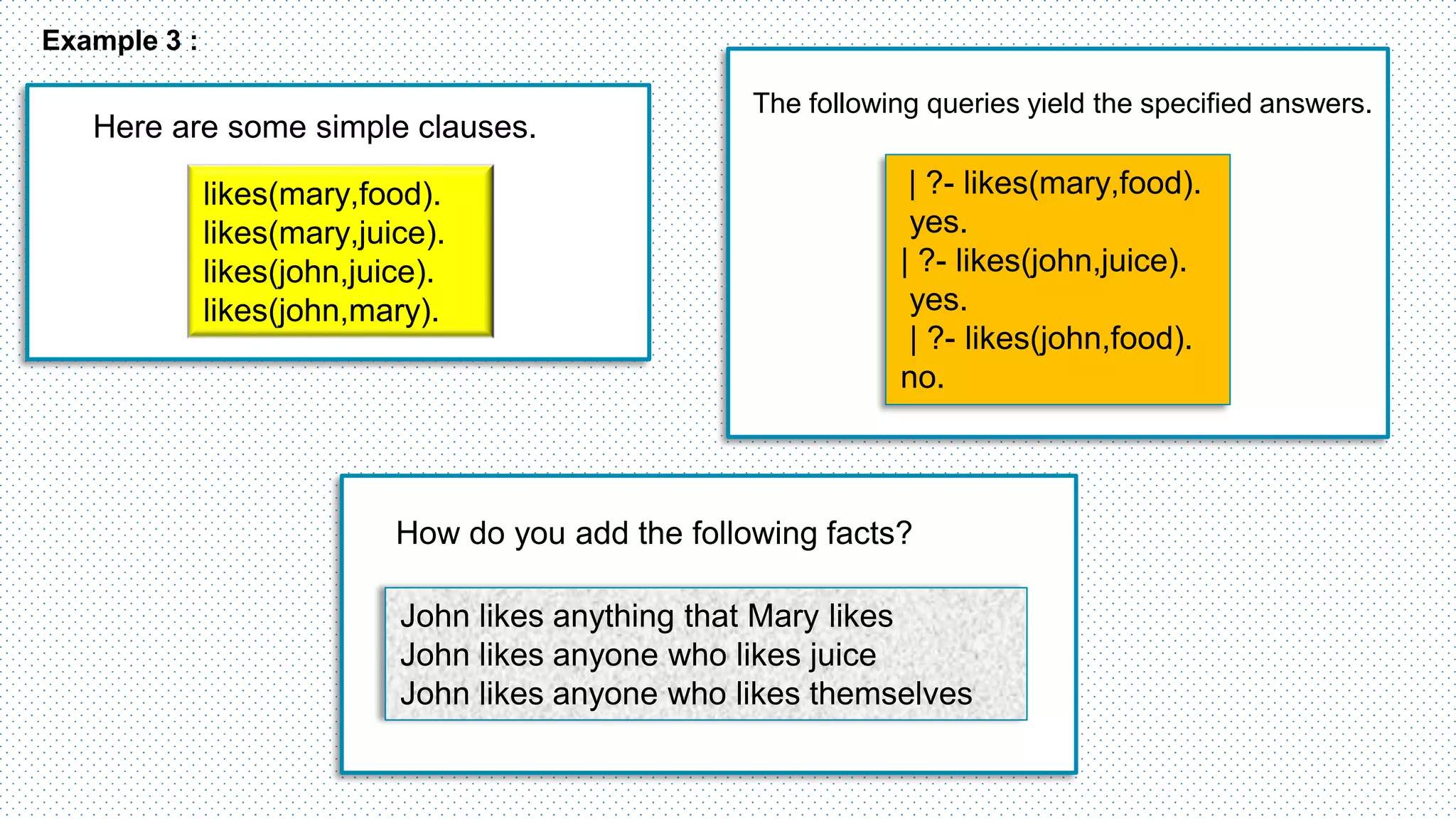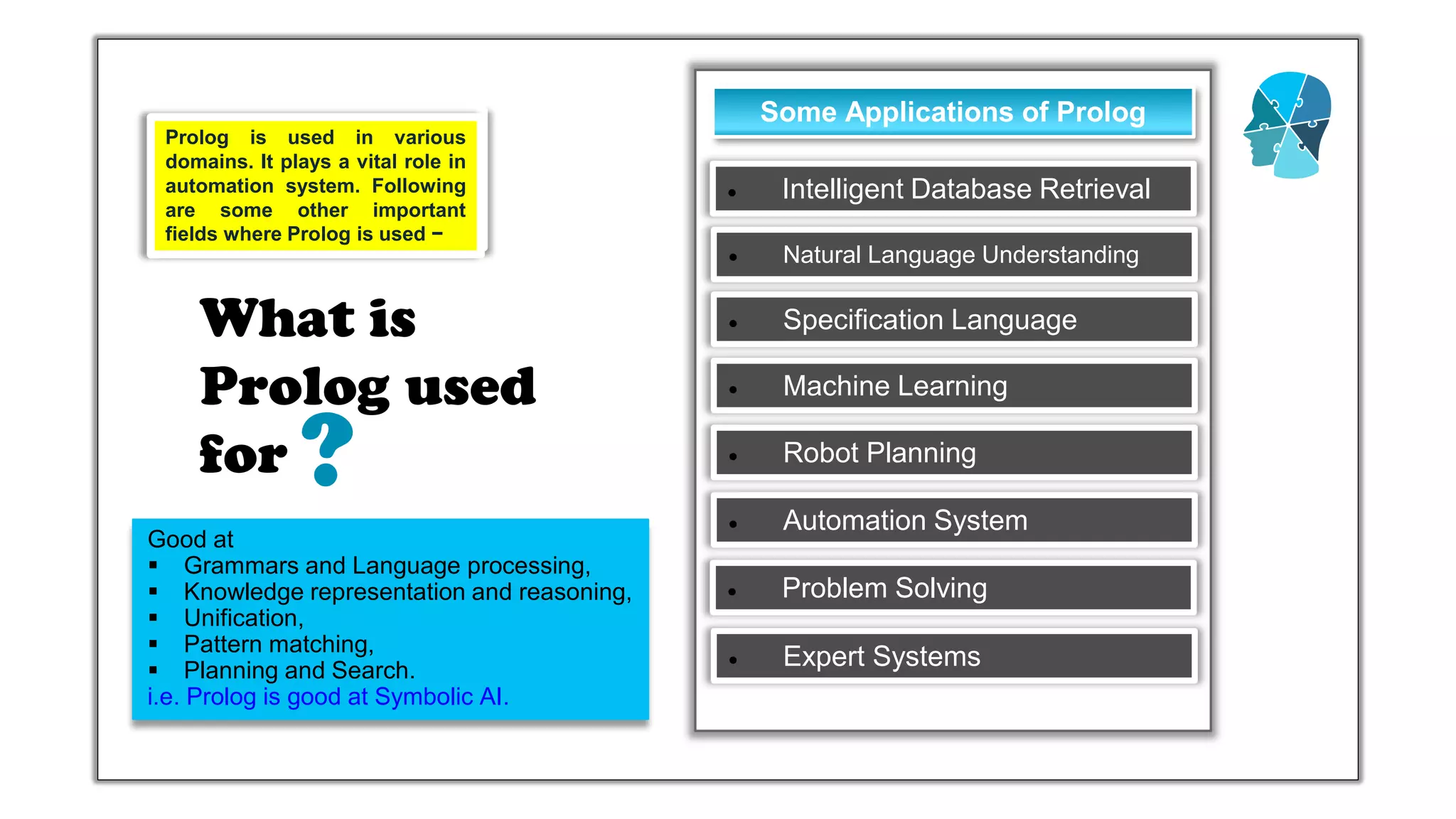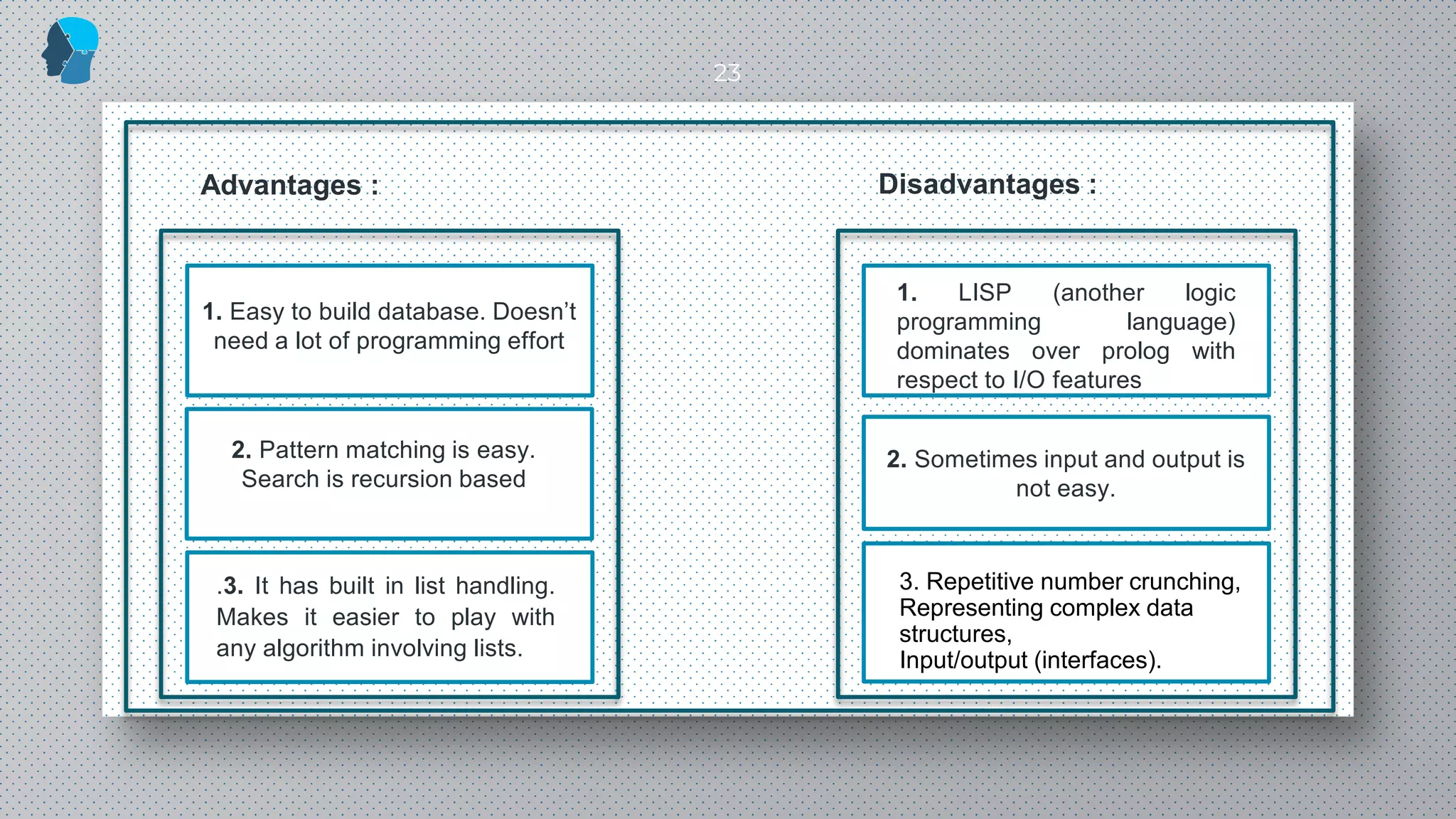Prolog is a logic programming language primarily utilized in artificial intelligence, emphasizing a declarative approach where users specify what problems to solve rather than how to solve them. It operates using facts, rules, and queries, with a structure based on predicate logic known as horn clauses. Prolog finds applications in various domains including intelligent database retrieval, natural language understanding, and expert systems.
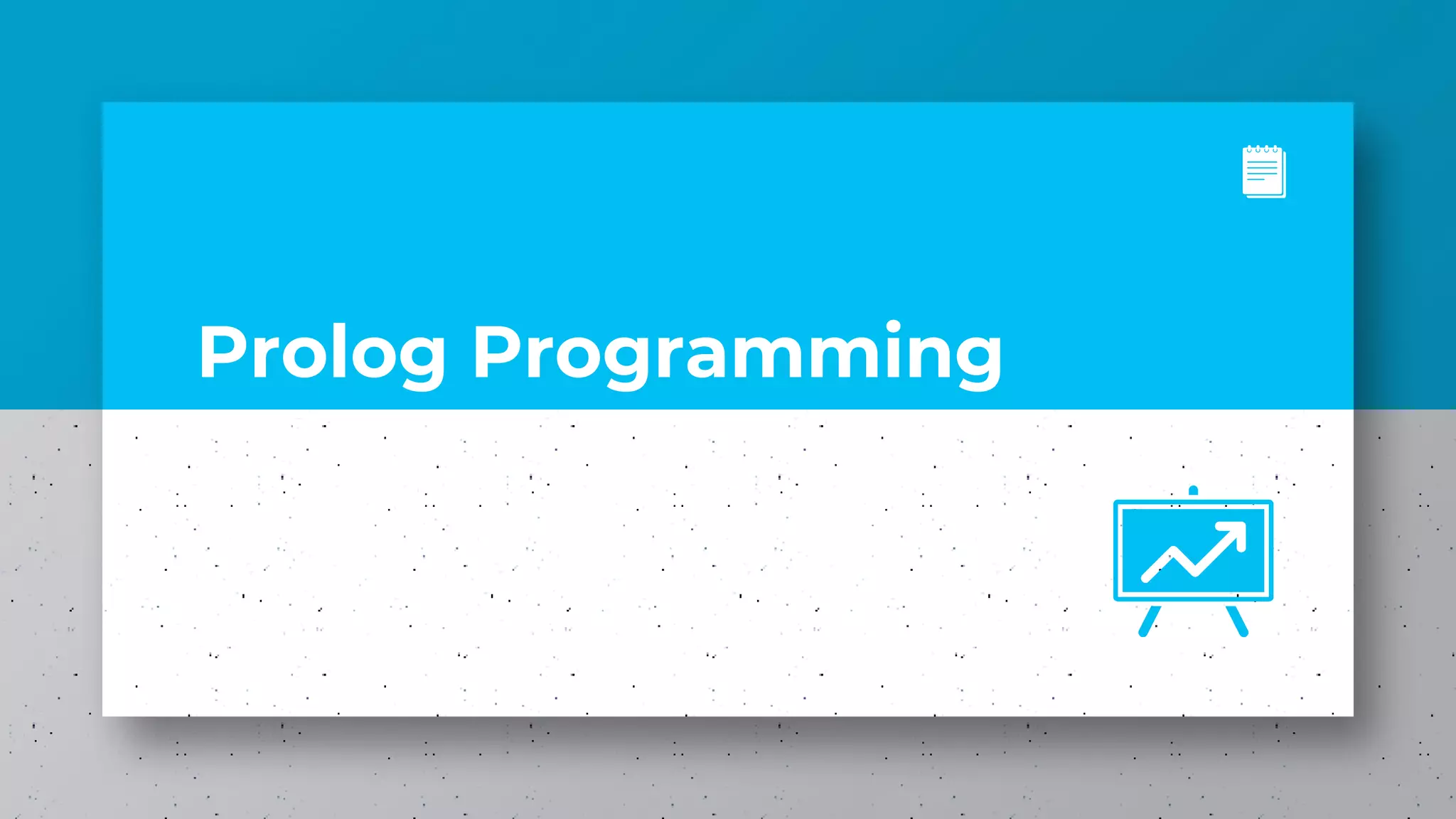

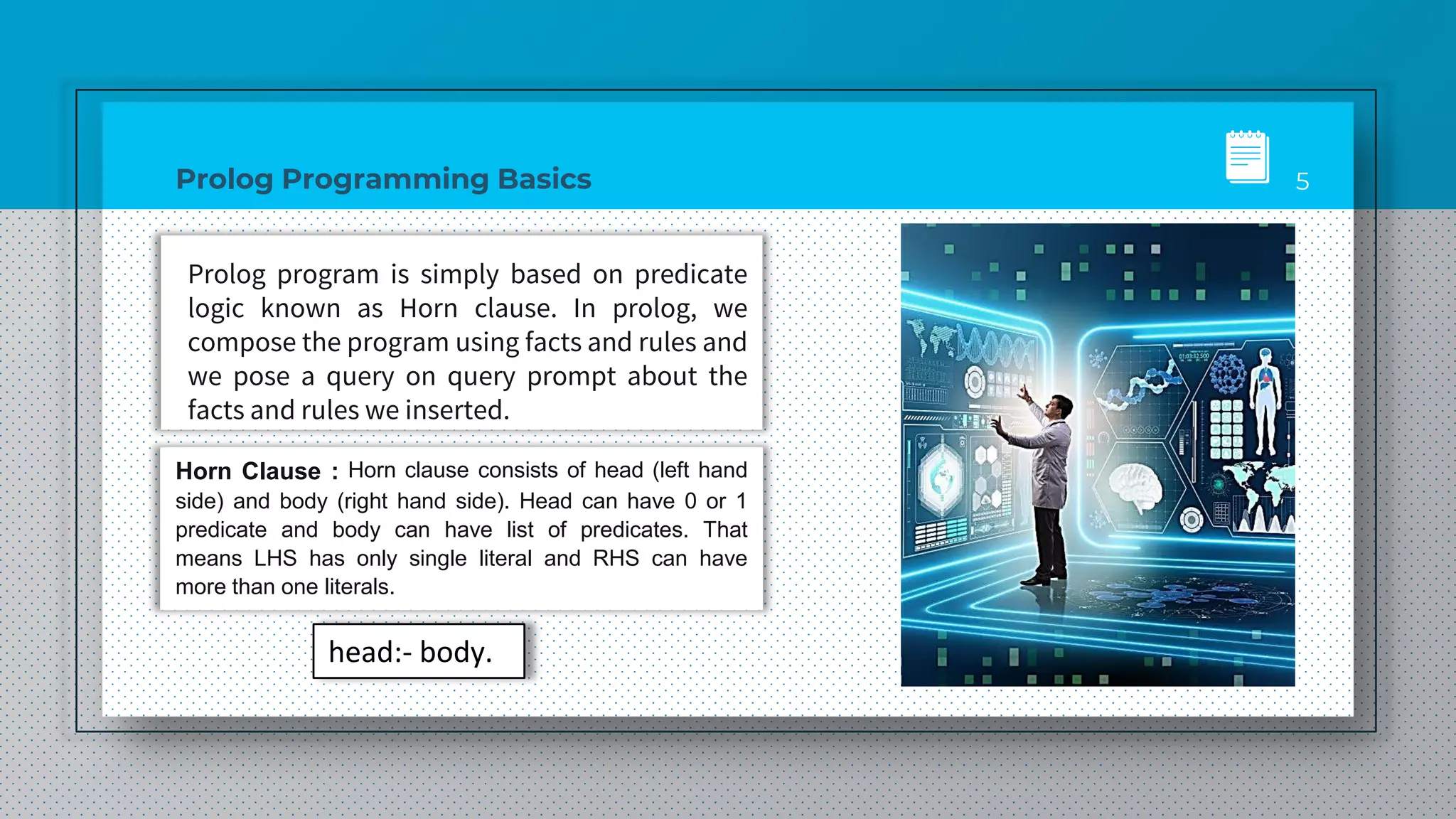
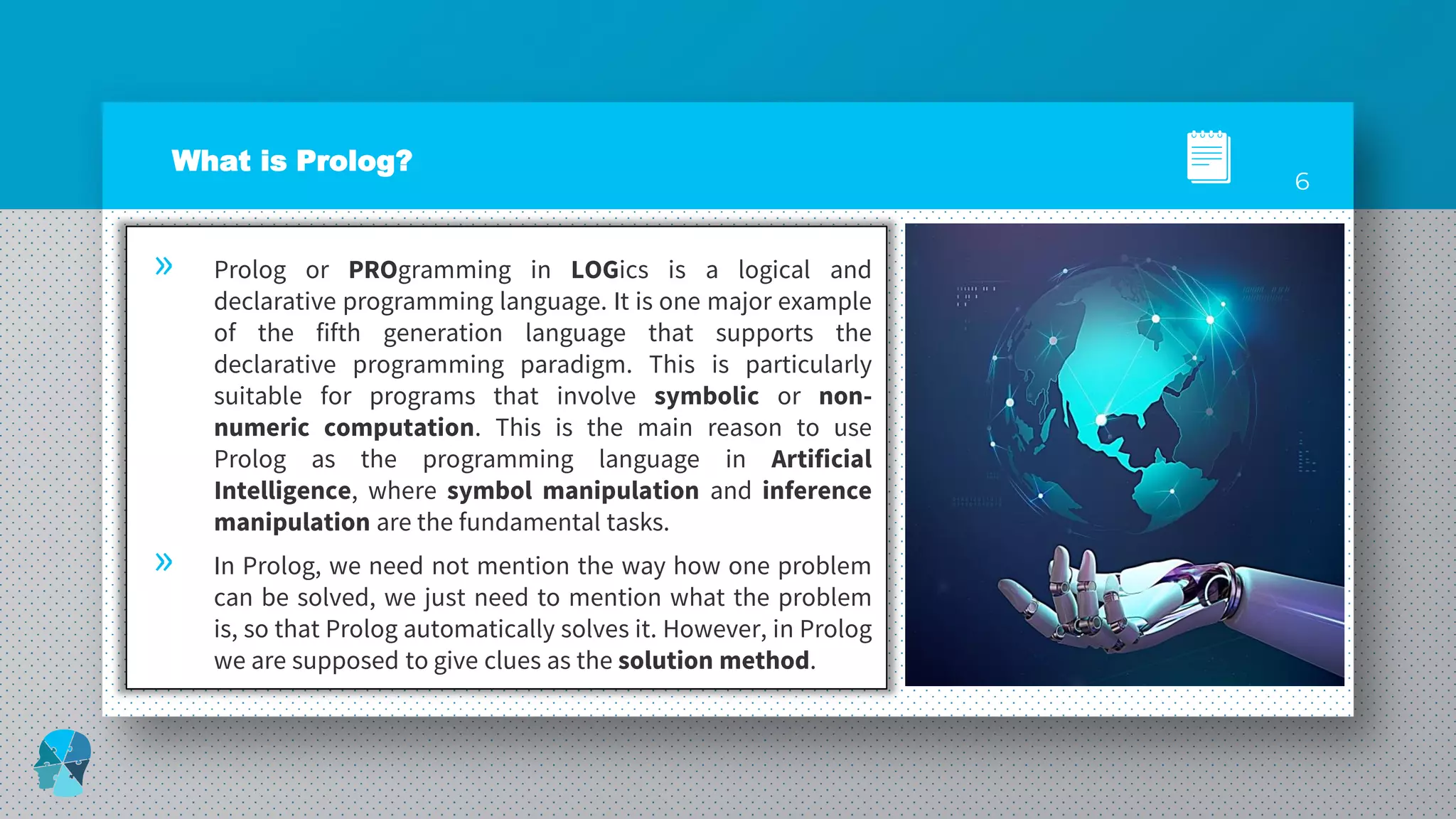
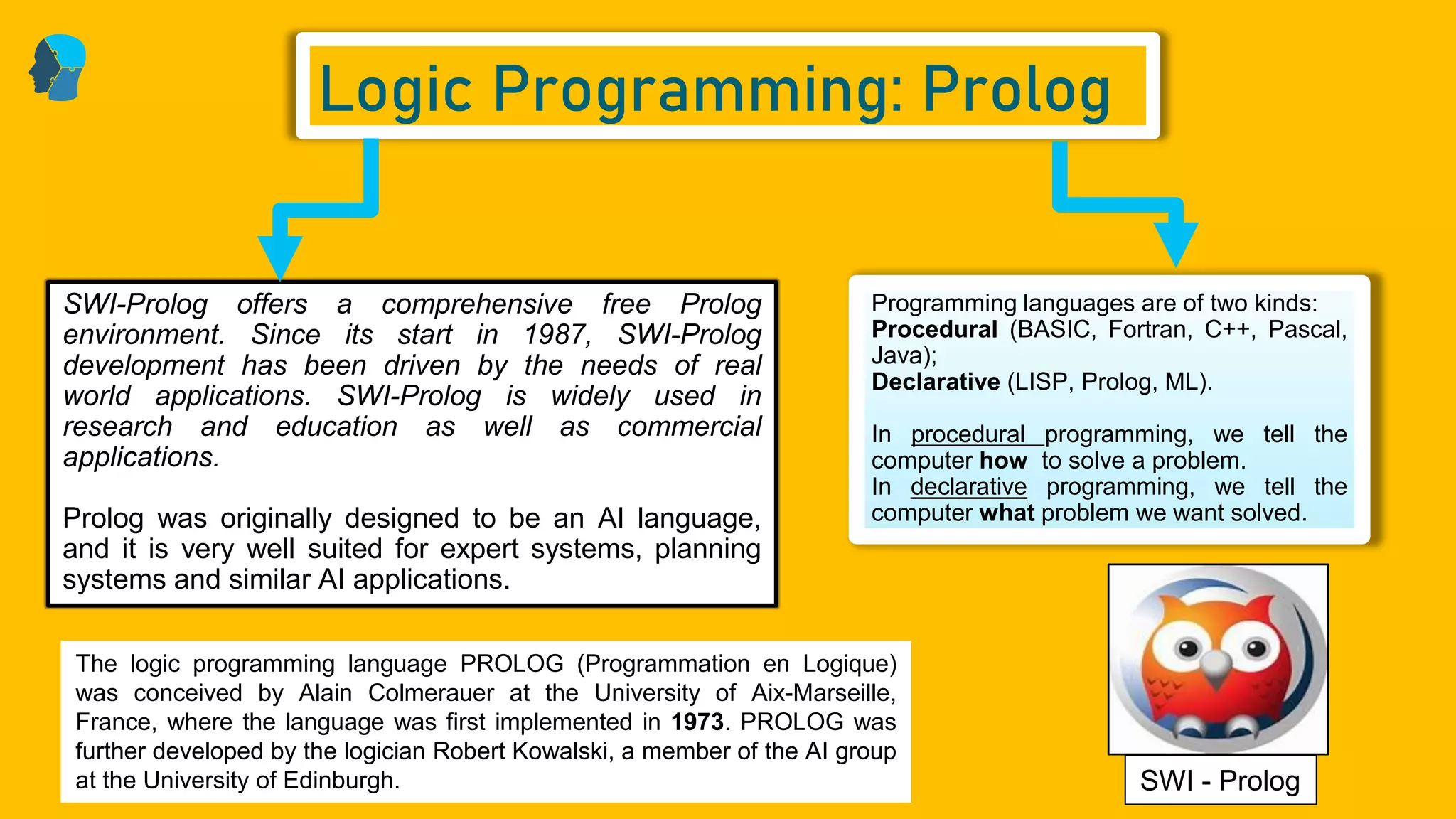
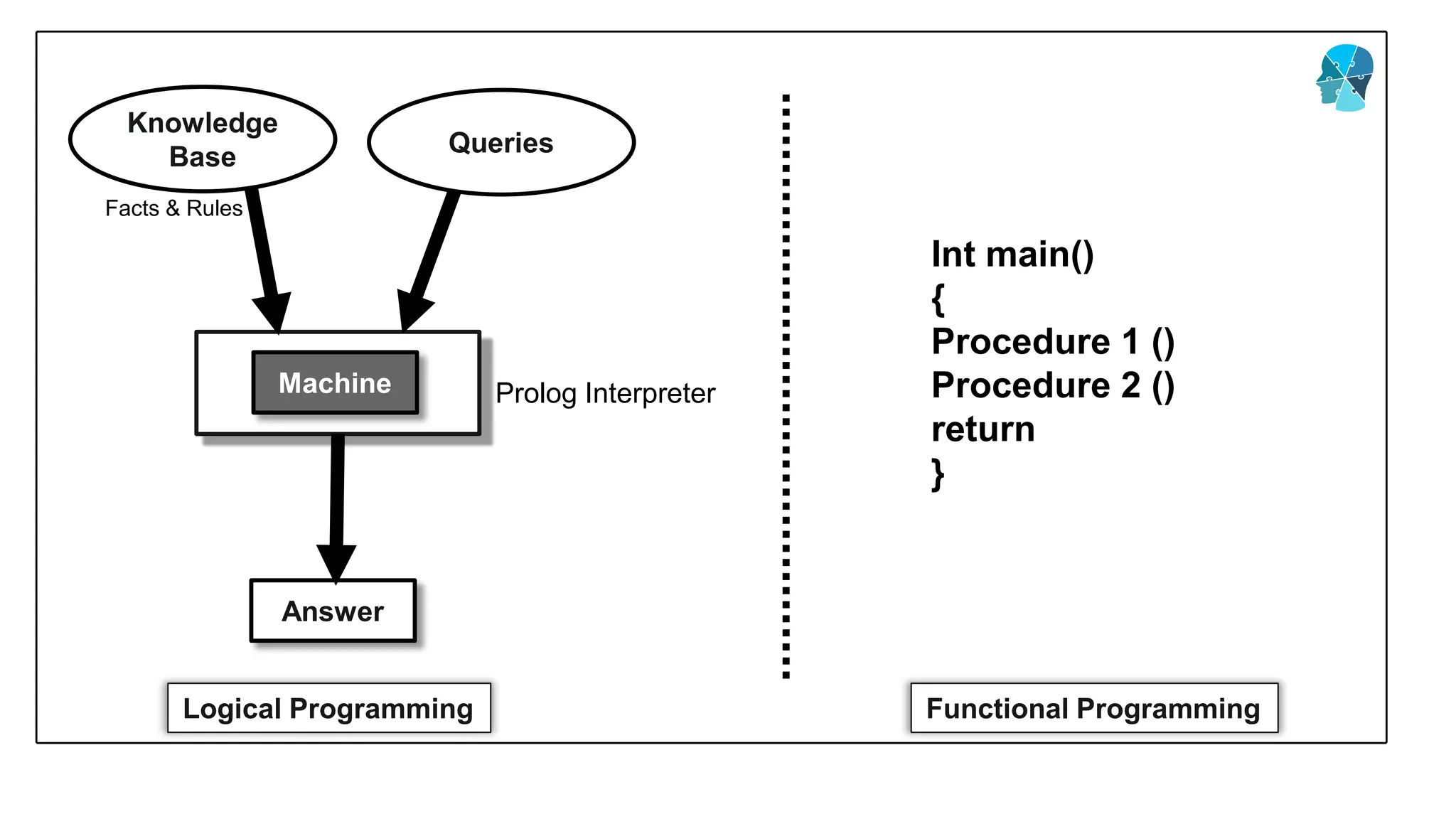
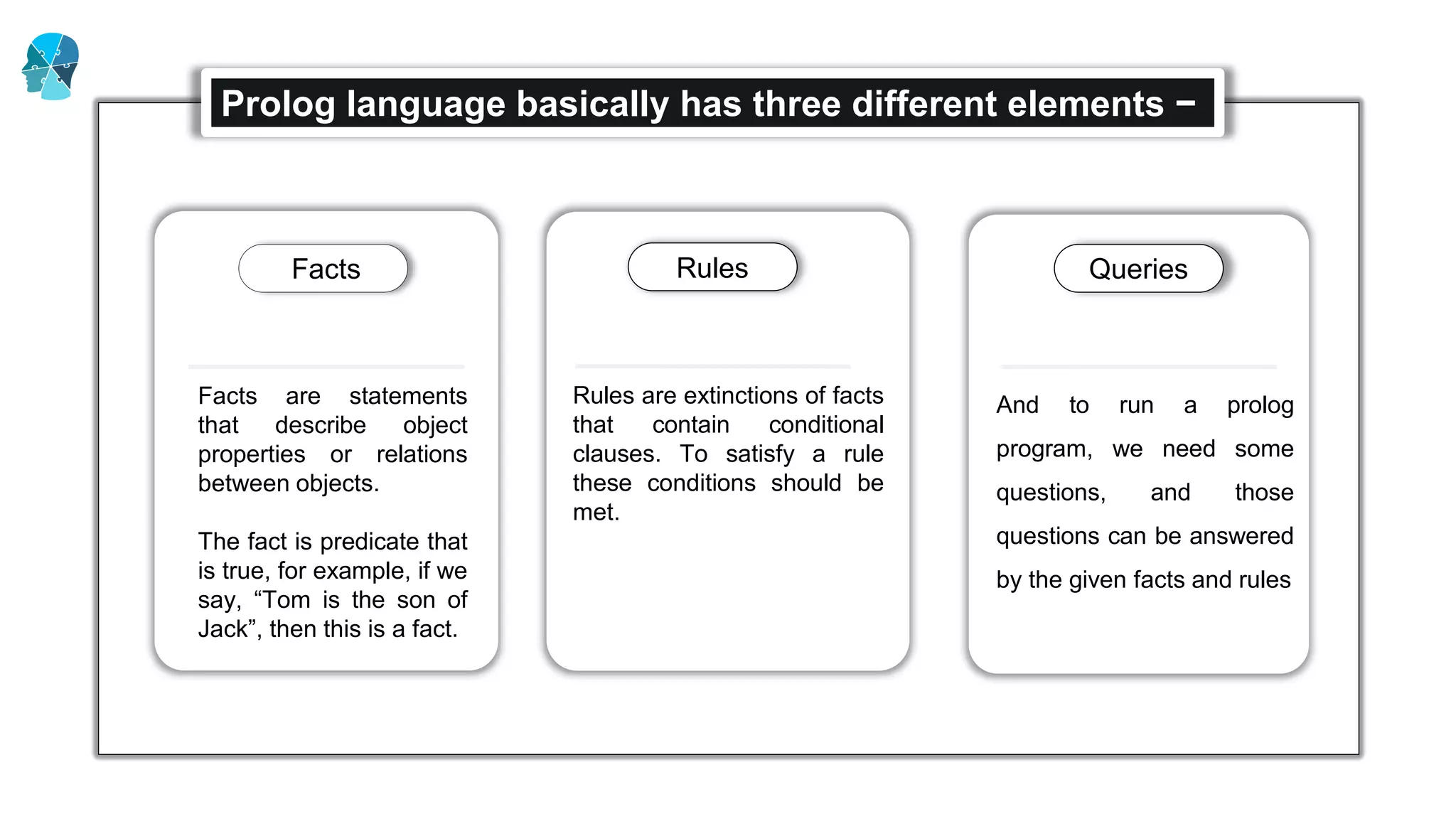
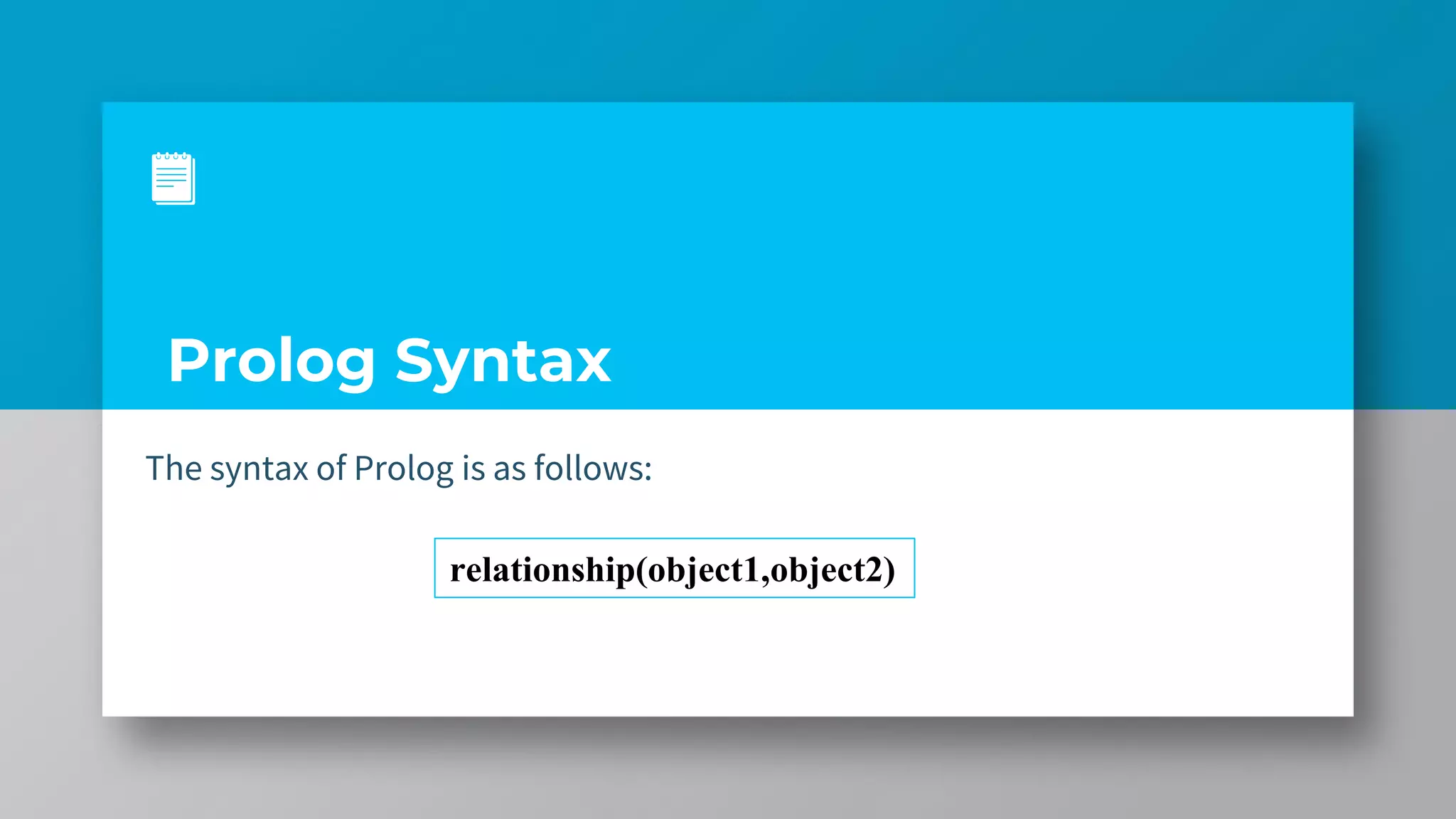

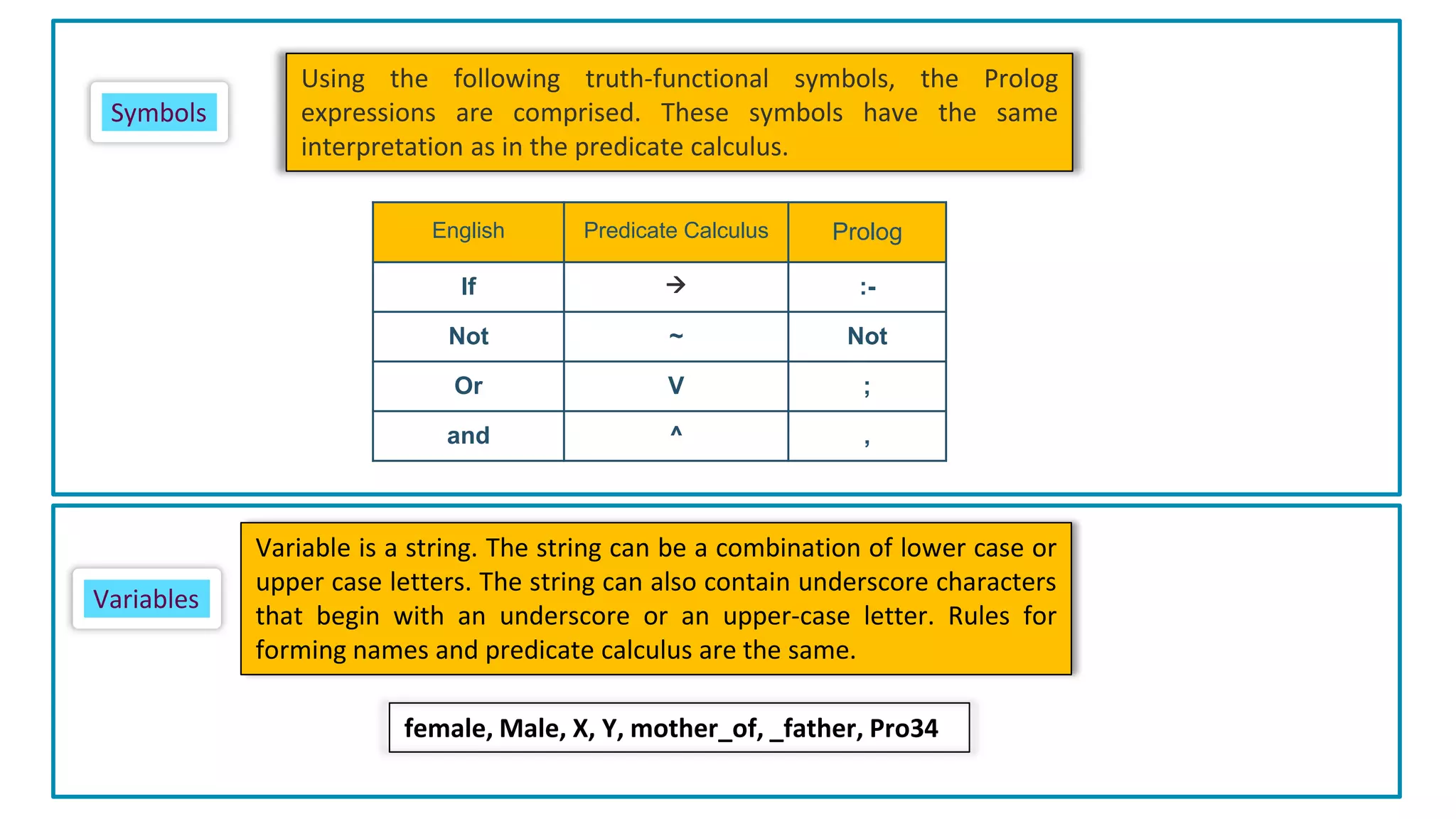
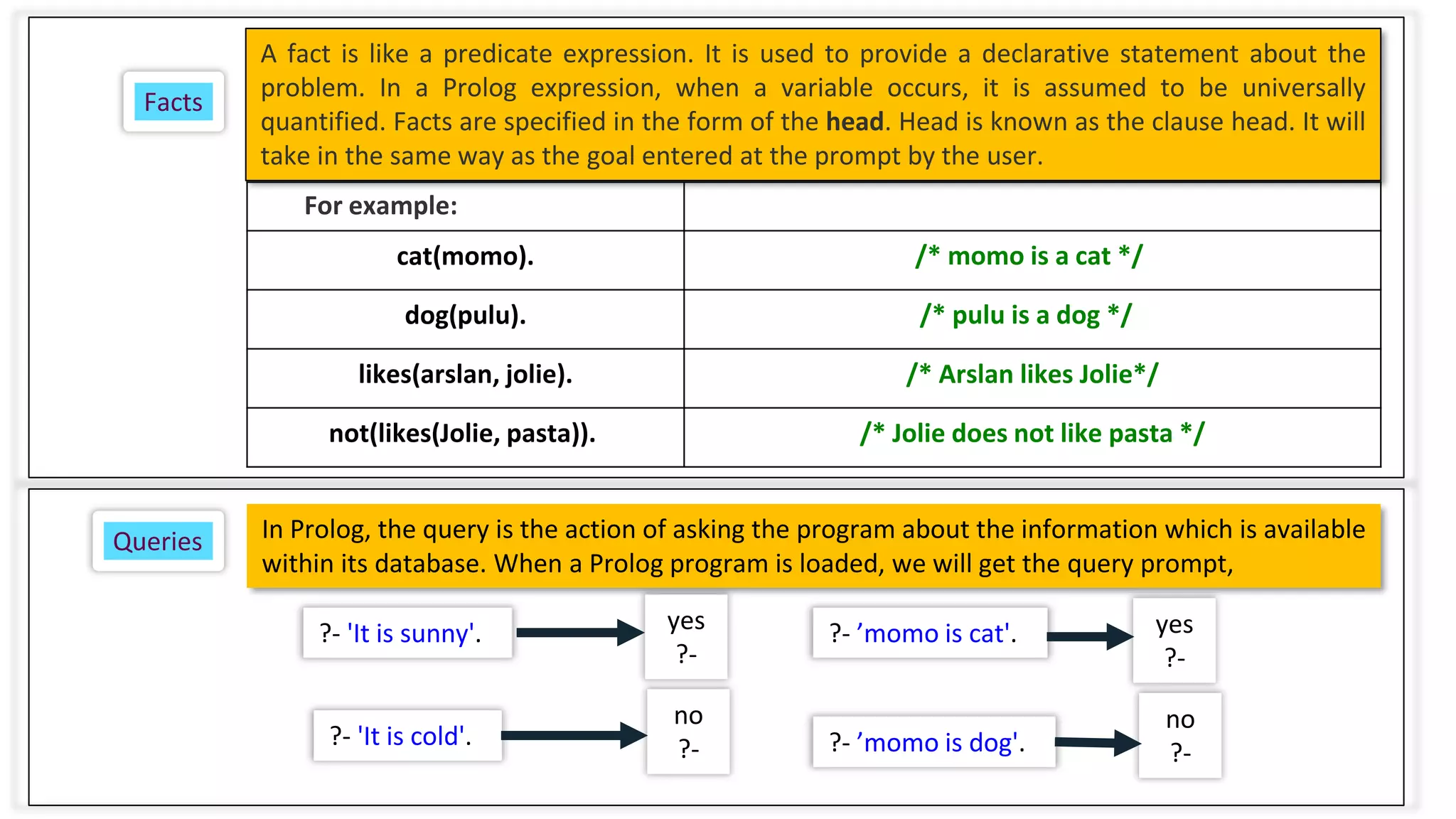
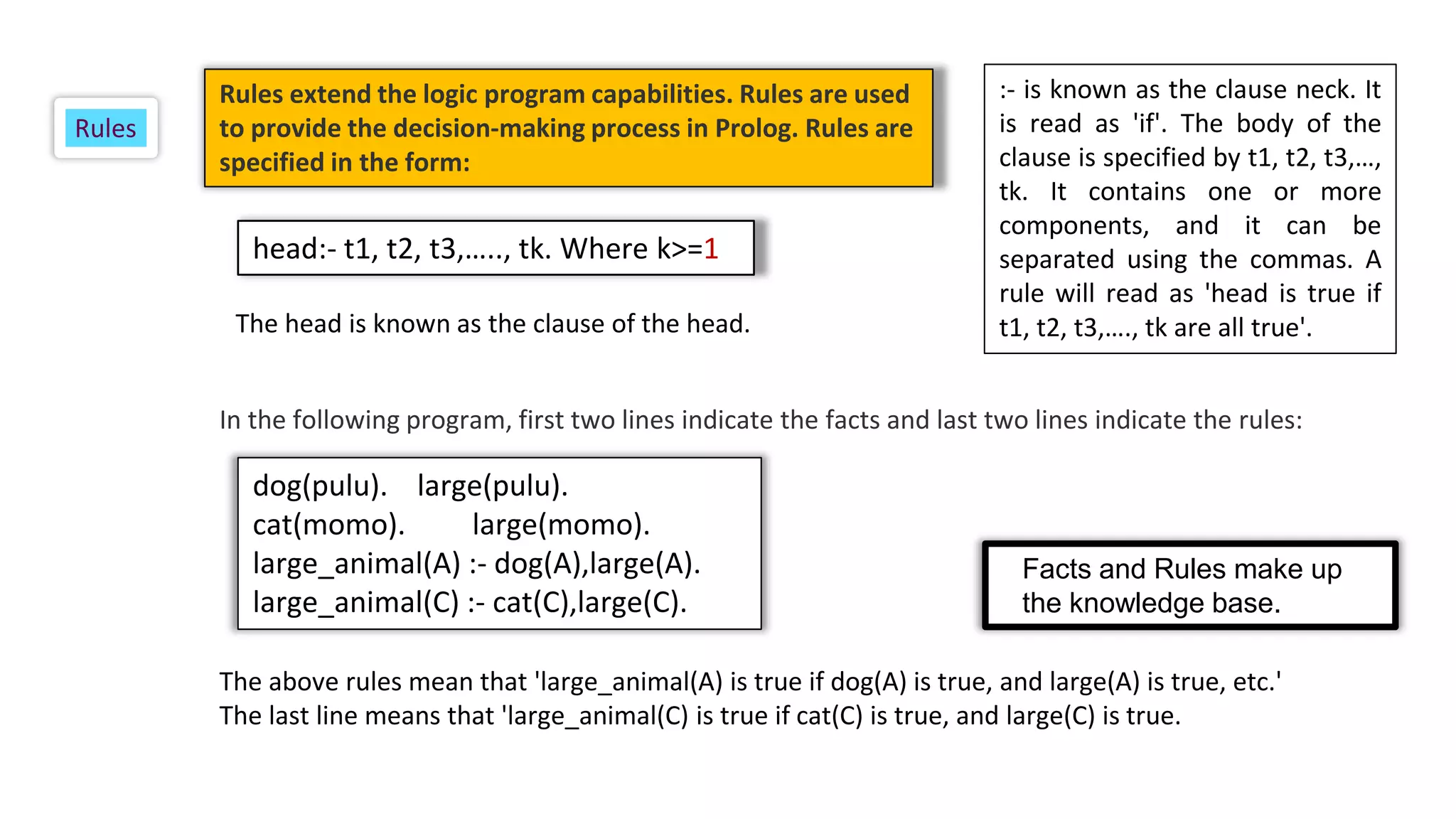
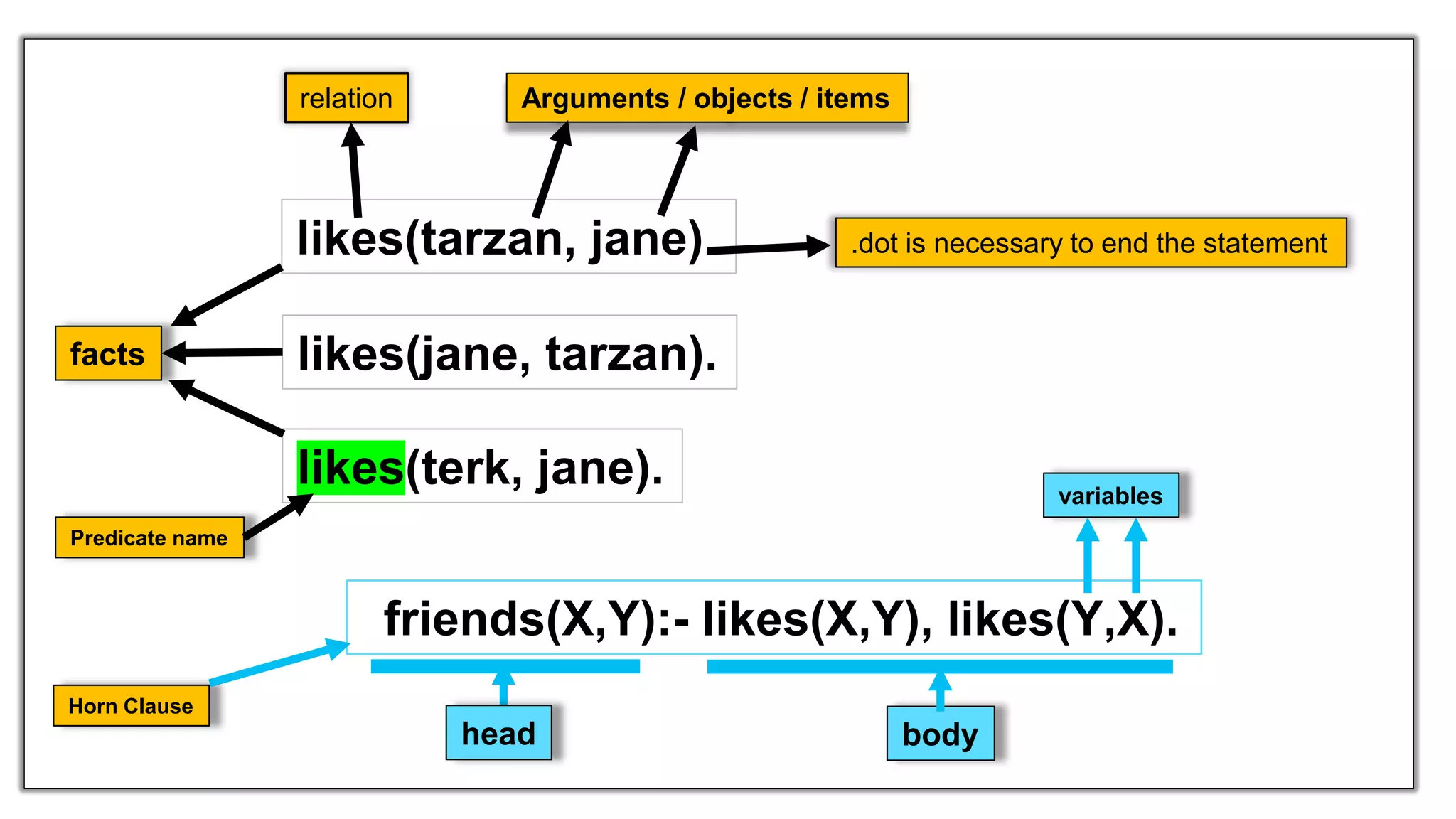
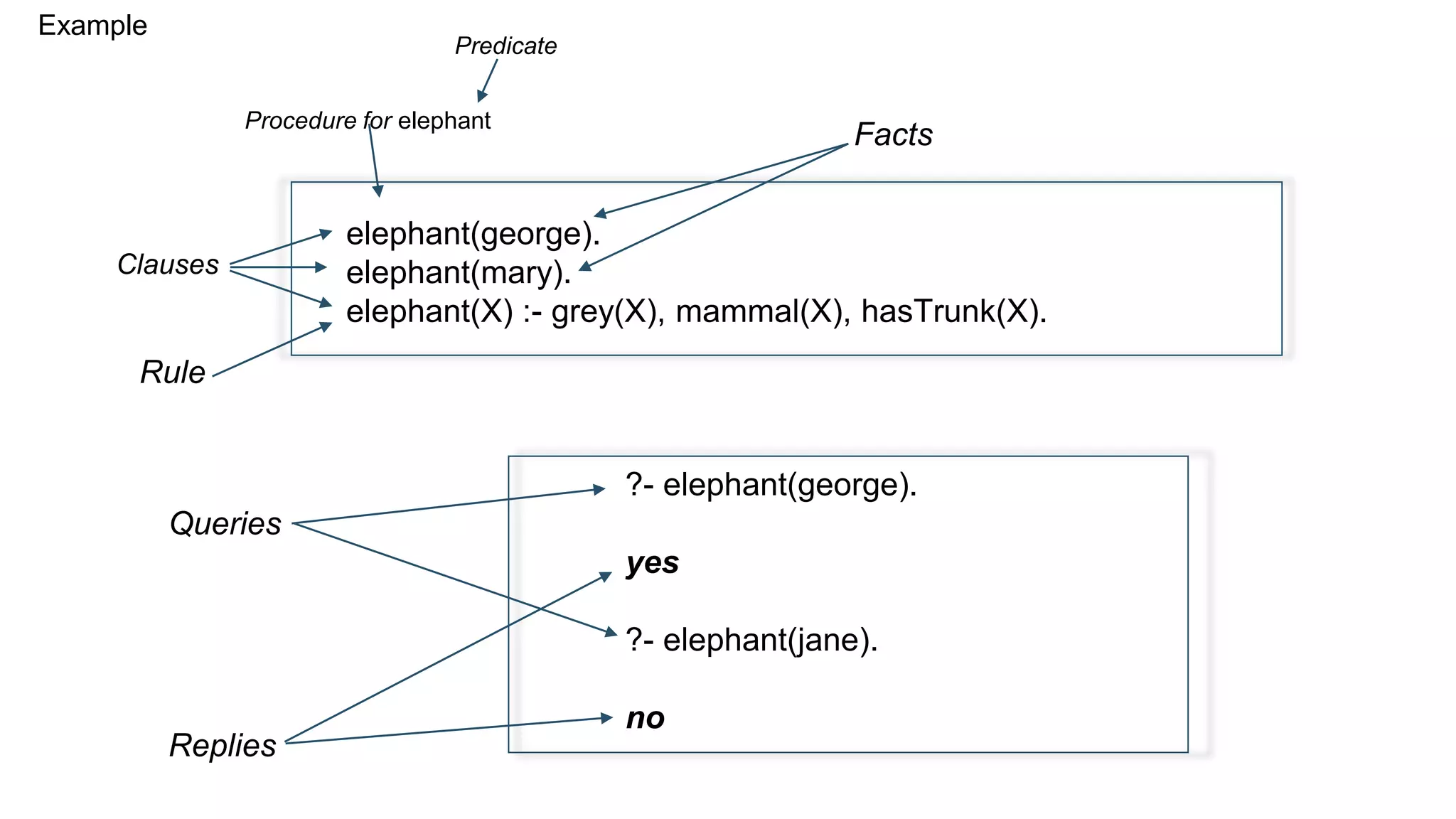
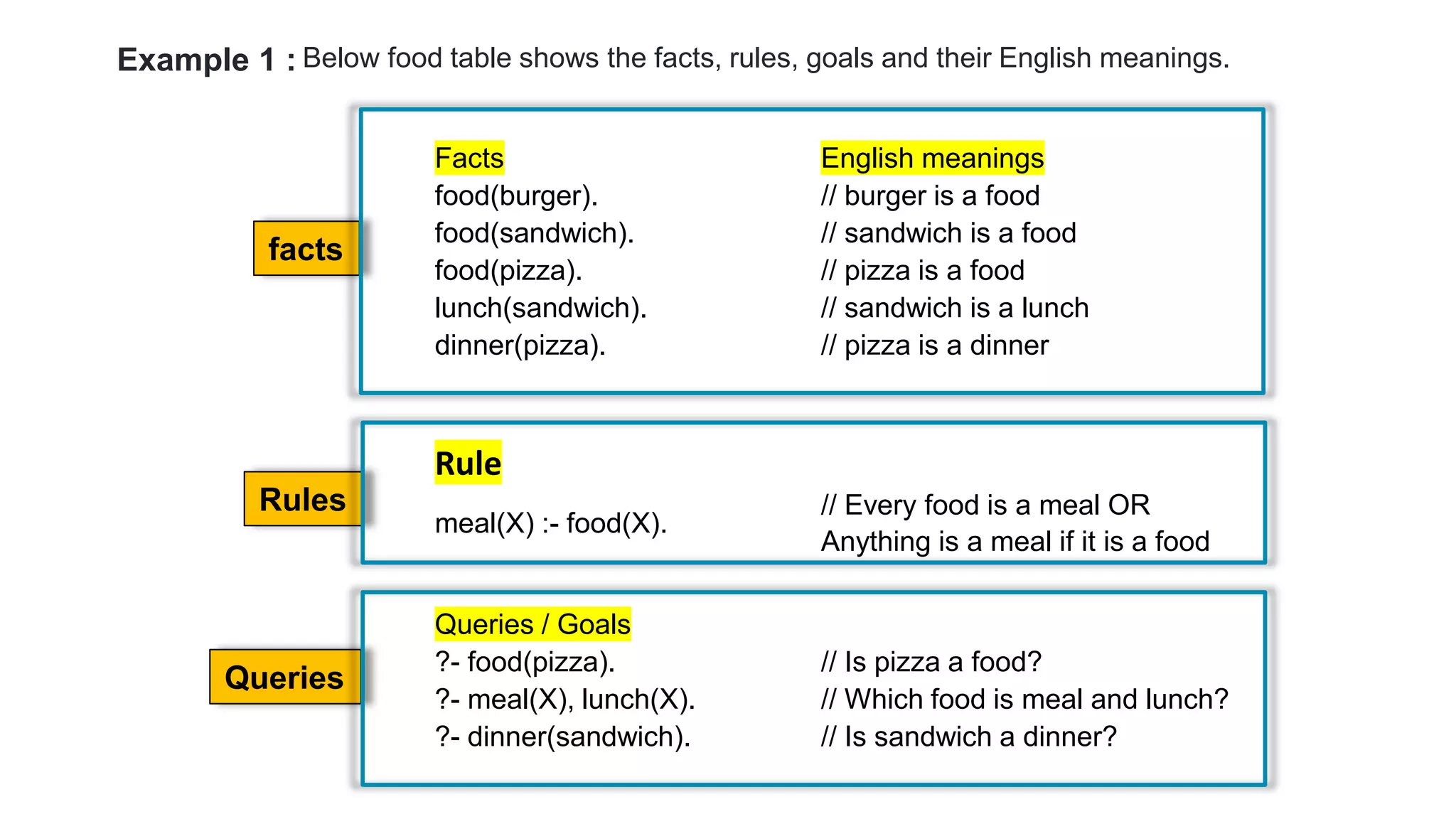
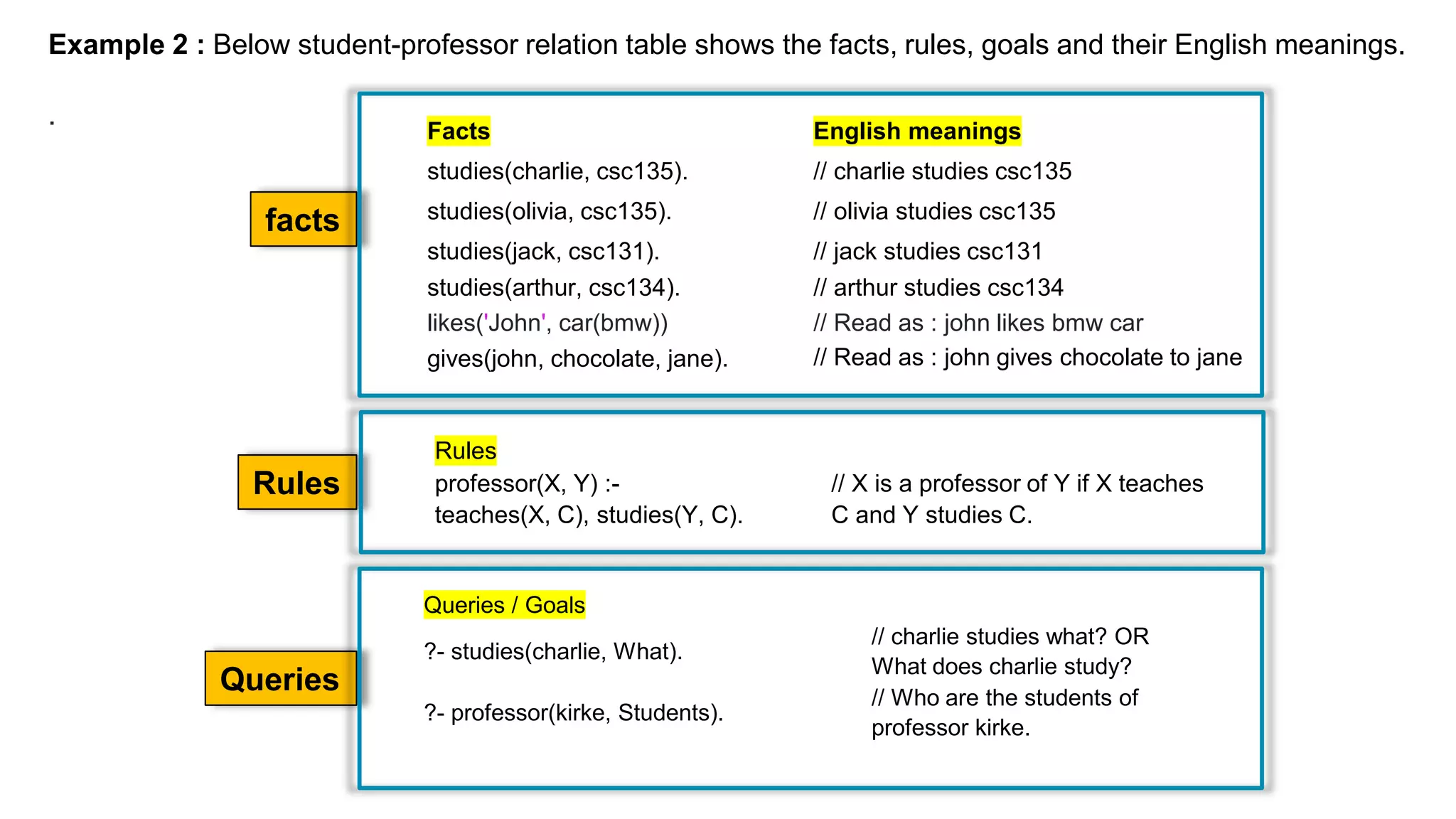
![19
Lists and Sequence in Prolog
In Prolog, the list builder uses brackets[...]. A list is referred by the
notation [A | B] in which, A is the first element, and whose tail is B.
The following example shows the three definitions, where the first
element of the list is refereed by the 'car', the tail of the list is referred
by 'cdr', list constructor is referred by the 'cons'.
car([A | B], A).
cdr([A | B], B).
cons[A, B, [A | S]).
Where,
•A is the head(car) of [A | B].
•B is the tail(car) of [A | B].
•Put A at the head and B as the tail constructs the list [A | S].
The predicate 'member/2' definition is described as follows:
member(A, [A | S]).
member(A, [B | S]) :- member(A, S).
The clauses can be read as follows:
•A is a list member whose first element is A.
•A is a list member whose tail is S if A is a member of S.](https://image.slidesharecdn.com/prologprologprogramming-220707084233-463acf8a/75/Prolog-Prolog-Programming-IN-AI-pdf-17-2048.jpg)
